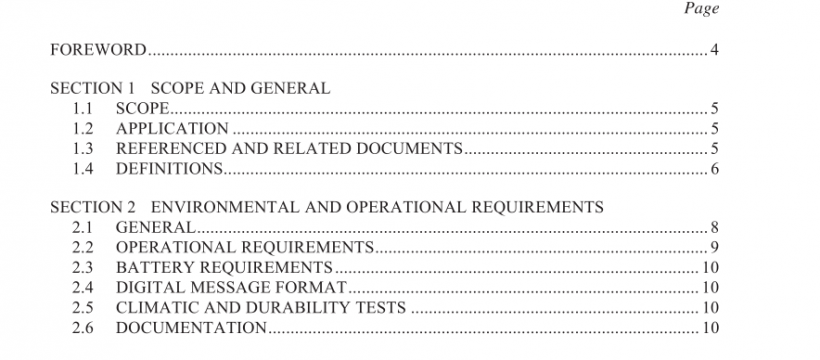AS NZS 4280.2:2017 pdf free download
AS NZS 4280.2:2017 pdf free download.406 MHz satellite distress beacons
B2.4 Vibration test
The equipment, complete with carry case/buoyancy pouch/buoyancy collar if permanently affixed, shall be clamped in its normal position to the vibration table. The equipment may be suspended to compensate for any weight not capable of being withstood by the vibration table. Additionally, provision may be made to reduce or nullify any adverse effect on equipment performance which could be caused by the presence of the electromagnetic field of the vibration units. The test report shall include details of the exact conditions.
The equipment shall first be vibrated vertically over the frequency range 1 Hz to 12.5 Hz with a peak-to-peak amplitude of 3.2 mm, during a period of 15 min.
The equipment shall then be vibrated vertically over the frequency range 12.5 Hz to 25 Hz with a peak-to-peak amplitude of 0.76 mm, during a period of 15 min.
Finally, the equipment shall be vibrated vertically over the frequency range 25 Hz to 50 Hz with a peak-to-peak amplitude of 0.2 mm, during a period of 15 min.
The frequency range sweep rate for the vibration tests shall not be greater than one octaveper minute.
Where appropriate, e.g. for portable equipment, mast-mounted equipment or equipment intended to be solely wall mounted, the vibration test shall be repeated with the vibration in each of the two mutually perpendicular directions in the horizontal plane.
Throughout the vibration test, the equipment shall be switched on and performance checks carried out.
As far as possible, the equipment shall be kept under inspection during the test and if any parts are seen to exhibit a pronounced resonance, this shall be investigated.
After completion of the vibration test, the equipment shall be inspected for any mechanical deterioration and performance checks shall be carried out.
B2.5 Drop test
The equipment shall be dropped six times from a height of 1.22 m onto a non-resilient test surface. The test unit shall be tested in its normal operational configuration, including in its carrying-case/ buoyancy pouch/buoyancy collar if permanently affixed. The test unit need not be activated during this test.
The non-resilient surface receiving the impact shall be of 25 mm plywood backed by concrete.
On completion of the drop test, the equipment shall not show any signs of external damage that will affect its integrity and performance.
AS NZS 4280.2:2017 pdf free download
